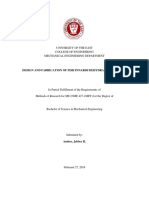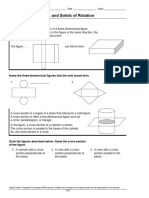Introduction to Artificial Intelligence
1. What is AI?
Artificial Intelligence (AI) is a field of computer science that focuses on building machines
that can perform tasks requiring human-like intelligence. These tasks include reasoning,
learning, problem-solving, decision-making, and understanding natural language.
Definitions:
- John McCarthy (1956): “AI is the science and engineering of making intelligent machines,
especially intelligent computer programs.”
- Simple definition: AI is the ability of a computer system to simulate human intelligence.
Examples in Daily Life:
- Voice assistants: Siri, Alexa, Google Assistant.
- Recommendation systems: YouTube, Netflix, Amazon.
- Self-driving cars: Tesla Autopilot.
- Healthcare AI: Disease detection from X-rays.
2. Foundations of AI
AI is not developed from a single subject; rather, it is a combination of multiple disciplines.
The foundations are:
1. Mathematics – Provides tools for logic, probability, and algorithms. Example: Graph
theory for pathfinding.
2. Computer Science – Provides programming languages, data structures, and hardware.
Example: Python libraries like TensorFlow, PyTorch.
3. Psychology – Helps in modeling human thinking and behavior. Example: Facial
recognition inspired by human vision.
4. Biology and Neuroscience – Human brain inspires neural networks. Example: Artificial
Neural Networks (ANNs).
5. Economics – Decision-making and rational choice theory help design intelligent agents.
3. History of AI
The journey of AI can be divided into stages:
- 1940s–50s: Early concepts – Alan Turing introduced the Turing Test.
- 1956: Birth of AI – John McCarthy coined the term at Dartmouth Conference.
- 1960s–70s: Growth of AI – Theorem proving, robots in labs.
- 1980s: Expert Systems – Example: MYCIN for medical diagnosis.
- 1990s–2000s: Machine Learning – IBM Deep Blue defeated Garry Kasparov.
- 2010s–Present: Deep Learning and Modern AI – Self-driving cars, humanoid robots, AI in
smartphones.
�4. Intelligent Agents
Definition: An agent is anything that can perceive its environment through sensors and act
upon it using actuators.
Example: A robot vacuum cleaner.
- Sensors: Dust detection, camera.
- Actuators: Wheels, cleaning brushes.
Agent = Sensors + Actuators + Decision-making
5. Environment of Agents
The environment is the surrounding in which an agent works.
Examples:
- For a chess AI → environment = chessboard.
- For a self-driving car → environment = roads, traffic, pedestrians.
Properties of Environment:
1. Fully observable vs. Partially observable (chess vs. driving in fog).
2. Deterministic vs. Stochastic (tic-tac-toe vs. stock market).
3. Static vs. Dynamic (crossword vs. driving a car).
4. Discrete vs. Continuous (chess moves vs. car speed).
6. Concept of Rationality
A rational agent is one that always chooses the best action based on its knowledge to
maximize performance.
Examples:
- A self-driving car deciding the safest route while avoiding traffic.
- A chess program selecting a move that improves winning chances.
7. Structure of Agents
Types of agents based on their structure:
1. Simple Reflex Agents – Work on condition–action rules. Example: Thermostat.
2. Model-Based Reflex Agents – Use memory of past actions. Example: Robot vacuum
mapping.
3. Goal-Based Agents – Aim to achieve specific goals. Example: GPS navigation.
4. Utility-Based Agents – Maximize satisfaction. Example: Movie recommendation system.
Conclusion
Artificial Intelligence is one of the most powerful technologies of the 21st century. It has
grown from simple problem solvers to advanced systems like self-driving cars and
humanoid robots. The study of agents, environments, rationality, and structures of agents
helps us design intelligent systems. With continuous research, AI will become even more
integrated into human life.






















































































